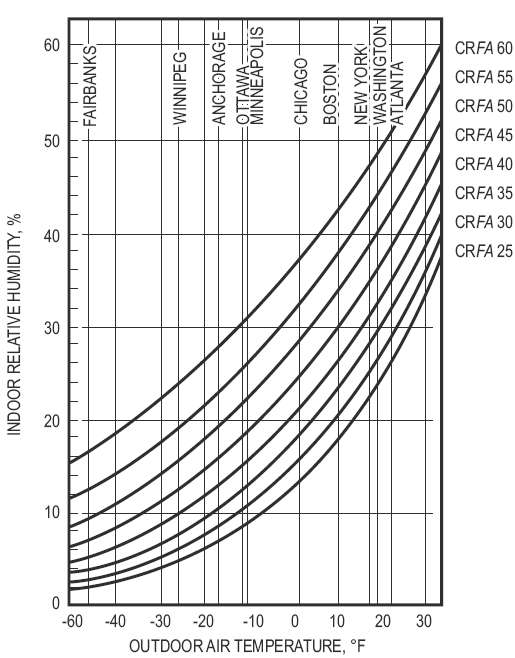Related Resources: calculators
Condensation Resistance Factor Calculator
Heat Transfer Engineering
Thermodynamics and Heat Transfer Resources
HVAC System and Components Design and Engineering Data
Glass or Frame Condensation Resistance Factor (CRF) or Temperature Index (I)
Current measures of condensation resistance of a fenestration system are the condensation resistance (CR) as defined by NFRC500 (2014j) and its user guide (2014h), the condensation resistance factor (CRF) as defined by AAMA (1988), or the temperature index (I), as defined in CSA Standards A440 and A440.1.
Note that the temperature index method in CSA Standard A440 stipulates that the test is performed on the fenestration with all the cracks not sealed. This represents a major difference between the CSA Standard A440 method and the AAMA and NFRC methods.
Condensation resistance is a measure of condensation potential, based on both area and temperature weighting and expressed as a minimum of center-of-glazing, edge-of-glazing, and frame CRs. The novelty of this index is that it is determined using computer simulation tools unless the overall thermal performance cannot be validated with testing. If thermal performance cannot be validated, a testing option for determining CR is used.
Figure 1 can be used to determine the acceptable range of CRF/I for a specific climatic zone. Note that the two different standards differ in the methods used to determine temperature and as such should be consulted.
The condensation resistance factor (CRF) or temperature index (I) for fenestration glass or frame is calculated from
Eq. 1
CRF or I = ( t - tc) / ( th - tc )
Where
th = warm side temperature
tc = cold side temperature
t = glass or frame temperature
Figure 1 Recommended Minimum Condensation Resistance Requirements (th = 68°F)
References
ASHRAE Handbook - Refrigeration, ASHRAE: 2014.
Related
- Heat Loss Through a Wall Equation and Calculator Determine the steady state heat loss through a single wall.
- Heat Loss Through Enclosure Walls Equations and Calculator Determine required wall thickness of an enclosure for temperature control and insulation requirements. Known Design Data: Size (thickness) of insulated encluosure walls and inside and external surface temperatures
- Heat Loss through Aluminum Framed Window Equations and Calculator Design equations and calculator example Heat Loss through Aluminum Framed Window.
- Heat Loss through a Single-Pane Window Equation and Calculator
- Condensation Review
- Heat Loss through a Double-Pane Window Equation and Calculator A double-pane window is considered. The rate of heat transfer through the window and the inner surface temperature are to be determined.
- Relative Humidity Calculator and Equation
- Humidity Ratio of Air
- Interior and Exterior Surface Heat Transfer Coefficients Equations for Windows Heat transfer through a window is also affected by the convection and radiation heat transfer coefficients between the glass surfaces and surroundings.
